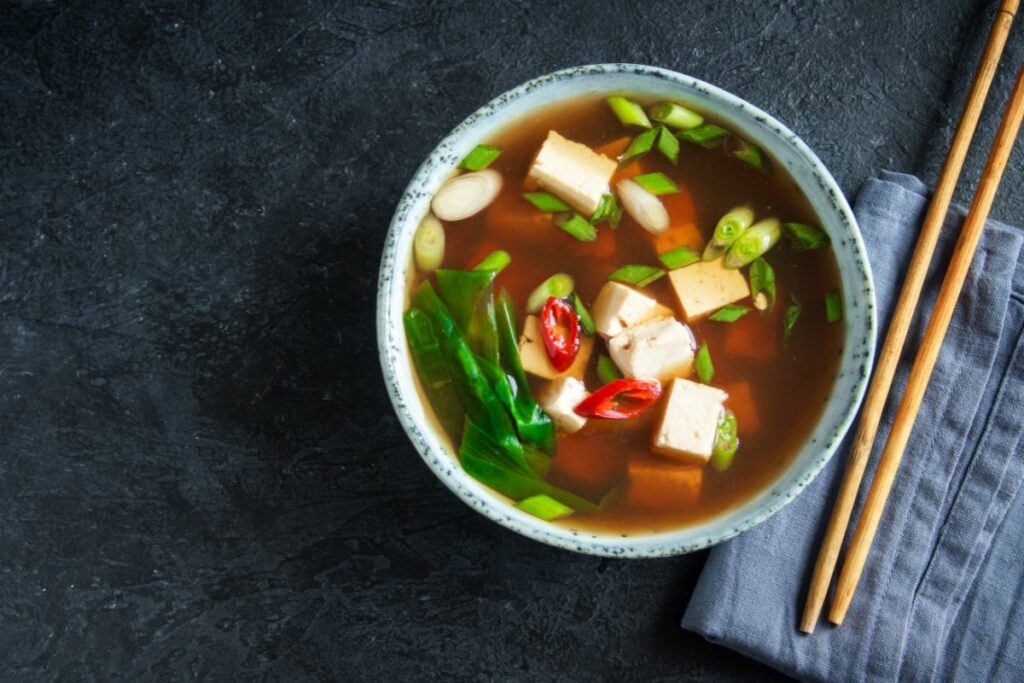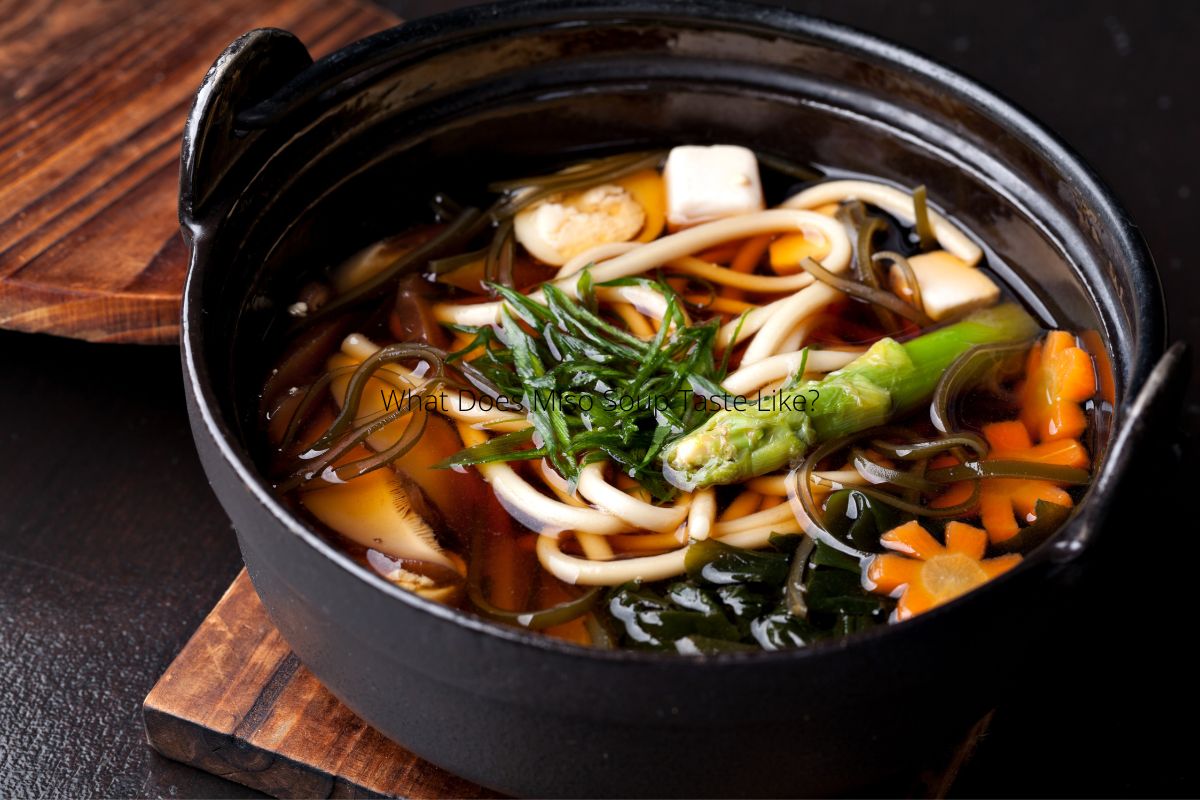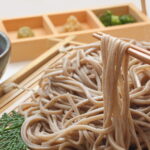Miso soup is a Japanese staple food that has become very popular around the world. The dish consists of fermented soybeans, salt, and water. What would you say it tastes like?
Miso soup is usually eaten as part of a meal, but it can also be enjoyed alone as a snack. In addition to being delicious, it contains high levels of protein and fiber.

It’s also rich in vitamins and minerals such as iron, calcium, magnesium, zinc, copper, vitamin B12, riboflavin, thiamine, niacin, pantothenic acid, folate, biotin, phosphorus, potassium, sodium, and selenium.
The most common types of miso are white, red, yellow, brown, green, black, and oroshi (a type of light-colored miso made with rice bran instead of soybeans).
There are many varieties of miso available today. Some people enjoy eating miso on its own, while others prefer adding other ingredients to their miso soup.
What Is Miso?
Miso is a seasoning made out of fermented soybeans, barley, rice, wheat, millet, corn, or buckwheat. It is traditionally served in Japanese cuisine alongside pickled vegetables and fish.
Miso is often used as a condiment in soups and stews, or mixed with vinegar to create shōyu. It is also commonly used in various types of sauces, including dashi, katsu sauce, and gomashio.
What Is Miso Soup?
Traditional miso soup is a classic comfort food that originated in Japan. It’s a combination of salty fermented soybeans and rice bran called “miso” and a broth made from kombu, kelp, and other sea vegetables.
As a result of fermentation, miso becomes rich in glutamic acid, an amino acid that provides umami, the fifth taste. Umami is what gives meat, cheese, and mushrooms their savory flavors.
Traditional miso soup contains a large amount of salt, which is why it tastes salty. Salt helps preserve foods and keeps them safe from spoilage.
In addition, the salt preserves the umami flavor of the miso. The soup can be served hot or cold, depending on preference. Some people like it warm, while others prefer it chilled.
Miso soup is traditionally made from an essential blend consisting of dashi and miso soup. Traditional production involves drying bonito flakes, kelps, and anchovies.
These ingredients impart a hearty, savory taste to the soup, along with a range of textures. Additional ingredients like tofu, vegetables, and seaweeds can be added to create different flavors and textures.
Miso soup is commonly served with rice and pickles. Miso is a traditional Japanese seasoning sauce made from fermented soybeans, salt, and grain. It is commonly served as an accompaniment to rice dishes.
Some varieties of miso are rich in minerals, vitamins, amino acids, and antioxidants. It is also high in protein and low in fat, making it an excellent choice for those looking to increase their daily intake of protein.
What Is Used To Make Miso Soup?
Miso soup is traditionally made with the following ingredients: Miso paste. Wakame seaweeds. Green onions and scallions. Tofurky cubes. It may also contain fish stock or bonito flakes, depending on whether it is vegetarian miso or not.
What Does It Taste Like?
There are many flavors that come out depending on what kind of miso soup you get. Since it’s made with vegetables, it’s not overly sweet. If you wanted to add sweetness, you could put honey in it. You might also add salt if you want your miso soup to taste more savory.
Depending on whether it’s made with bonito flakes, some miso soups might have a fishier flavor, like those made with salmon.
Miso soup is the best reference style point when talking about the best flavor sensations, which are known as something called Umami. Miso is a paste made out of fermented soybeans and salt.
It has a deep and salty savory flavor with funky, toasty, and sweet richness. Miso is often added to soups and stews to enhance their flavors.
What Can Be Put In Miso Soup?
If you’re making miso soup at your kitchen table, and want to get creative with it, there are plenty of ways to make it more interesting! Adding rice to the soup gives it a heartier feeling.

Adding noodles to the soup turns it into a noodle bowl. Sprouting beansprouts adds some crunchiness and makes it taste sweeter. Want a spicy miso soup? Add a few drops of Sriracha sauce to turn it up a notch!
Are There Eggs In Miso Soup?
Miso soup is traditionally made with soybeans, barley, and koji rice. There are many varieties of miso soup, but all of them contain ingredients like seaweed, mushrooms, and vegetables.
Most of the time, miso soup will not have eggs in them.
What Are The Health Benefits Of Miso Soup?
In 2019, scientists found that eating miso soup daily may help reduce blood pressure and heart rate. It also helps increase the number of beneficial gut bacteria, while reducing bad ones.
As a result, it can help prevent constipation and other digestive problems. Miso soup tends to be relatively low-calorie, making it an ideal meal if you’re watching your weight.
Miso soup is a healthy meal option! It is rich in protein, vitamins, and minerals. It is low in calories and fat and contains a lot of fiber. It is a great source of calcium, which is important for bones and teeth.
It also has a high amount of iodine, which is essential for thyroid function. Iodine deficiency can cause goiter, which is an enlarged thyroid gland. Goiter can be treated with dietary changes, medication, or surgery.
Seaweed is a great source of iodine, an important nutrient for thyroid health. Seaweed contains iodine, which can be depleted by poor diets, stress, or certain medications. Soybeans are also a rich source of protein, helping you feel fuller while consuming fewer calories.
Miso soup is made from soybeans, salt, and other ingredients. Tofu, mushrooms, and green vegetables can all be added to miso soup to give it different flavors. When preparing miso soup, you can also use chicken stock instead of plain water.
Final Thoughts
Miso soup is a traditional Japanese dish. Miso soup is delicious and nutritious, making it a perfect addition to any diet plan. Try adding miso soup to your next dinner party or potluck!
We hope that this article has taught you everything you wanted to know about what miso soup tastes like and what it exactly is!
- 16 Best Websites To Watch Japanese Movies With English Subtitles - May 11, 2023
- Is ZIPAIR The Best Airline For Traveling To Japan? - May 11, 2023
- Ryu Murakami Vs Haruki Murakami – Which One Should You Read? - May 11, 2023








